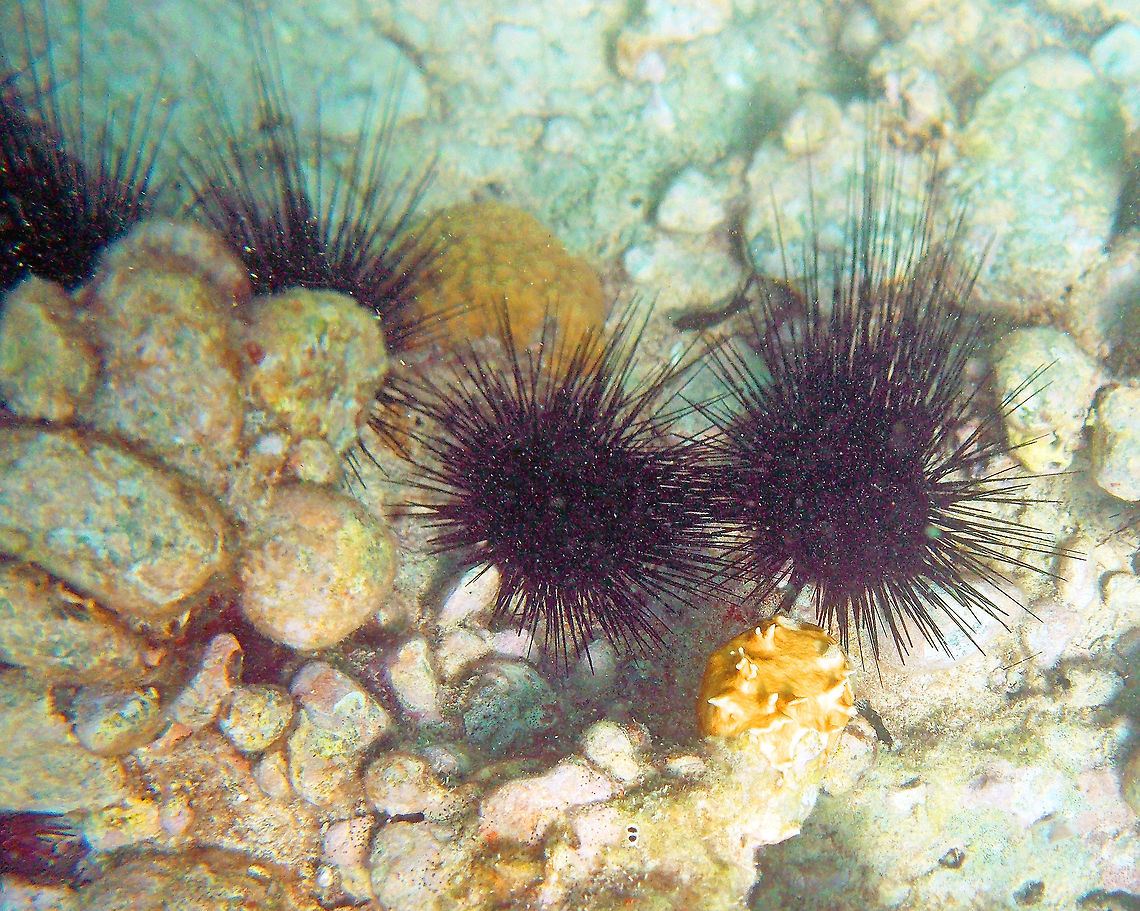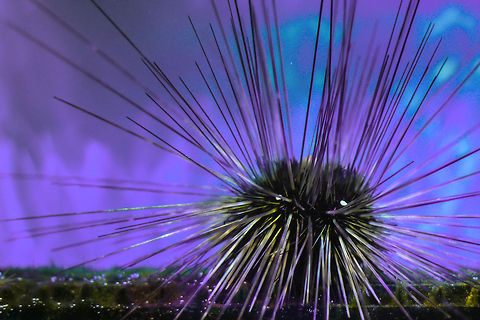 Country intro
Country intro
Long spined sea urchin
Sea urchins play a major role in the reef building process. They eat algea, scraping it off the rocks making it possible for corals to find a solid substrait to attach to. Where urchins are absent, so is seems, are corals. In the mid-80's a blight killed off about 90% of the population. This could be another reason for the loss of new coral growth.

''Diadema antillarum'', also known as the lime urchin, black sea urchin or the long-spined sea urchin, is a species of sea urchin in the Family Diadematidae.
This sea urchin is characterized by its exceptionally long black spines.
It is the most abundant and important herbivore on the coral reefs of the western Atlantic and Caribbean basin. When the population of these sea urchins is at a healthy level, they are the main grazers which prevent algae overgrowth of the reef.
